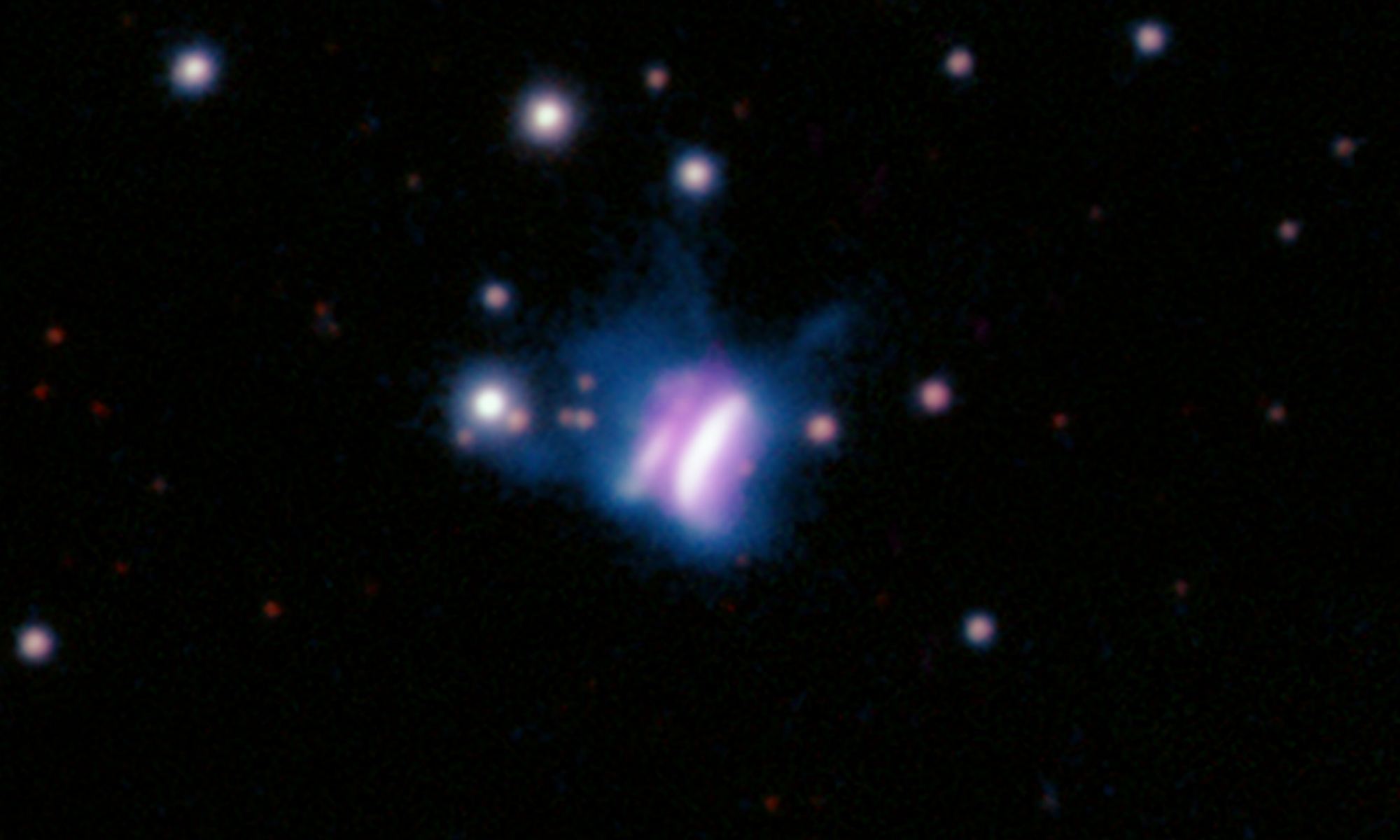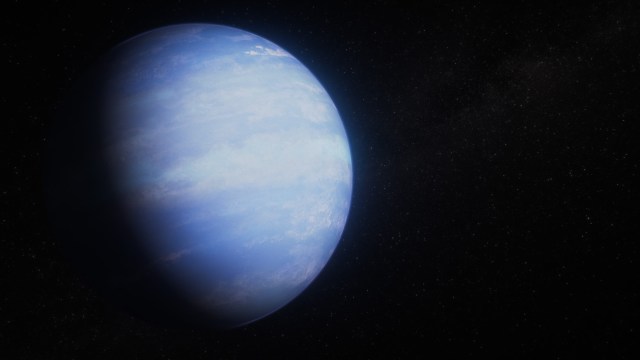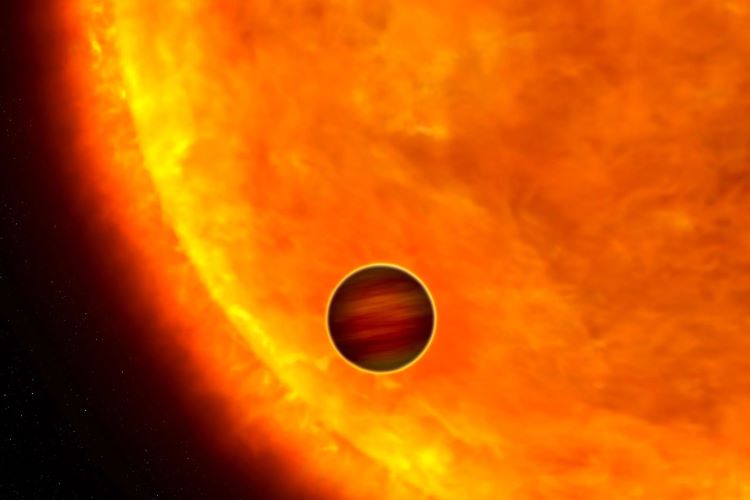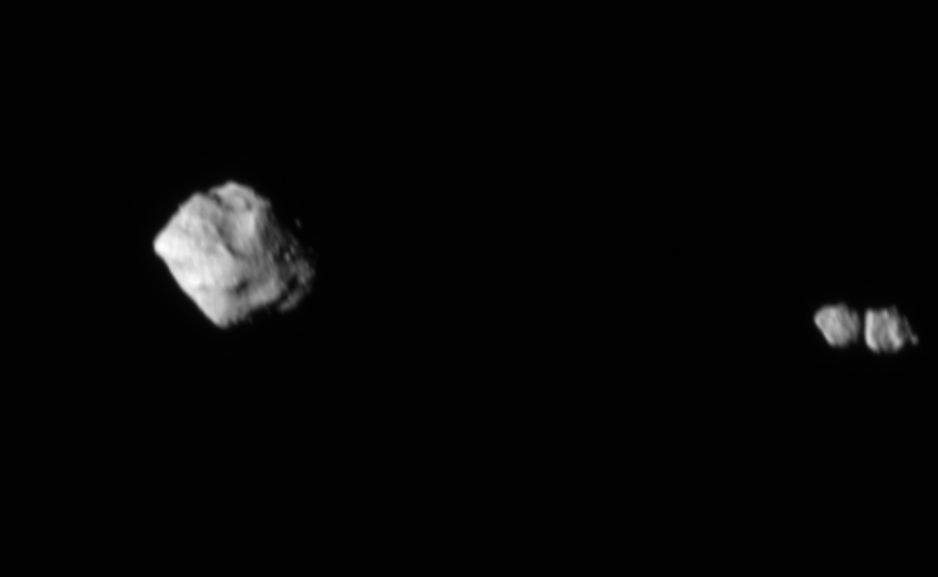I love the concept of a ‘puffy’ planet! The exoplanets discovered that fall into this category are typically the same size of Jupiter but 1/10th the mass! They tend to orbit their host star at close in orbits and are hot but one has been found that is different from the normal. This Neptune-mass exoplanet has been thought to be cooler but still have a lower density. The James Webb Space Telescope (JWST) has recently discovered that tidal energy from its elliptical orbit keeps its interior churning and puffs it out.
Continue reading “Webb Explains a Puffy Planet”The Largest Camera Ever Built Arrives at the Vera C. Rubin Observatory

It’s been 20 years in the making, but a 3200-megapixel camera built especially for astrophysics discoveries has finally arrived at its home. The Legacy of Space and Time (LSST) camera was delivered to the Vera C. Rubin Observatory in Chile in mid-May, 2024.
Continue reading “The Largest Camera Ever Built Arrives at the Vera C. Rubin Observatory”This is the Largest Planet-Forming Disk Ever Seen

Roughly 1,000 light-years from Earth, there is a cosmic structure known as IRAS 23077+6707 (IRAS 23077) that resembles a giant butterfly. Ciprian T. Berghea, an astronomer with the U.S. Naval Observatory, originally observed the structure in 2016 using the Panoramic Survey Telescope and Rapid Response System (Pan-STARRS). To the surprise of many, the structure has remained unchanged for years, leading some to question what IRAS 2307 could be.
Recently, two international teams of astronomers made follow-up observations using the Submillimeter Array at the Smithsonian Astrophysical Observatory (SAO) in Hawaii to better understand IRAS 2307. In a series of papers describing their findings, the teams revealed that IRAS 23077 is actually a young star surrounded by a massive protoplanetary debris disk, the largest ever observed. This discovery offers new insight into planet formation and the environments where this takes place.
Continue reading “This is the Largest Planet-Forming Disk Ever Seen”Maybe Ultra-Hot Jupiters Aren’t So Doomed After All
Ultra-hot Jupiters (UHJs) are some of the most fascinating astronomical objects in the cosmos, classified as having orbital periods of less than approximately 3 days with dayside temperatures exceeding 1,930 degrees Celsius (3,500 degrees Fahrenheit), as most are tidally locked with their parent stars. But will these extremely close orbits result in orbital decay for UHJs eventually doom them to being swallowed by their star, or can some orbit for the long term without worry? This is what a recent study accepted to the Planetary Science Journal hopes to address as a team of international researchers investigated potential orbital decays for several UHJs, which holds the potential to not only help astronomers better understand UHJs but also the formation and evolution of exoplanets, overall.
Continue reading “Maybe Ultra-Hot Jupiters Aren’t So Doomed After All”Could Alien Solar Panels Be Technosignatures?

If alien technological civilizations exist, they almost certainly use solar energy. Along with wind, it’s the cleanest, most accessible form of energy, at least here on Earth. Driven by technological advances and mass production, solar energy on Earth is expanding rapidly.
It seems likely that ETIs (Extraterrestrial Intelligence) using widespread solar energy on their planet could make their presence known to us.
Continue reading “Could Alien Solar Panels Be Technosignatures?”Finding The Age Of A Contact Binary “Moon”
There are millions of asteroids floating around the solar system. With so many of them, it should be no surprise that some are weirdly configured. A recent example of one of these weird configurations was discovered when Lucy, NASA’s mission to the Trojan asteroids, passed by a main-belt asteroid called Dinkinesh. It found that Dinkinesh had a “moon” – and that moon was a “contact binary”. Now known as Selam, it is made up of two objects that physically touch one another through gravity but aren’t fully merged into one another. Just how and when such an unexpected system might have formed is the subject of a new paper by Colby Merrill, a graduate researcher at Cornell, and their co-authors at the University of Colorado and the University of Bern.
Continue reading “Finding The Age Of A Contact Binary “Moon””After Swirling Around a Black Hole, Matter Just Falls Straight In

The physics surrounding black holes is just plain weird. A gravitational well so strong that not even light can escape can do some pretty strange things to normal matter. Over the decades, plenty of theories have been put forward about what those strange things might be. And now, a new paper from physicists at the University of Oxford has proved that, once again, Einstein’s theory of gravity was right.
Continue reading “After Swirling Around a Black Hole, Matter Just Falls Straight In”The Habitable Worlds Observatory Could See Lunar and Solar ‘Exo-Eclipses’

A future space observatory could use exo-eclipses to tease out exomoon populations.
If you’re like us, you’re still coming down from the celestial euphoria that was last month’s total solar eclipse. The spectacle of the Moon blocking out the Sun has also provided astronomers with unique scientific opportunities in the past, from the discovery of helium to proof for general relativity. Now, eclipses in remote exoplanetary systems could aid in the hunt for elusive exomoons.
Continue reading “The Habitable Worlds Observatory Could See Lunar and Solar ‘Exo-Eclipses’”New Shepard’s 25th Launch Carries Six to the Edge of Space and Back
Sending tourists to space is still relatively novel in the grand scheme of humanity’s journey to the stars. Dennis Tito took the first-ever paid trip in 2001, but since then, plenty of others have journeyed to the heavens. Increasingly, they’ve done so via systems developed by private companies. On Sunday, May 19th, Blue Origin, originally founded by Jeff Bezos to pursue his dreams of humanity’s future in space, successfully launched its seventh crewed mission – this time containing six first-time astronauts, including one that waited a long time for his day in space.
Continue reading “New Shepard’s 25th Launch Carries Six to the Edge of Space and Back”That Recent Solar Storm Was Detected Almost Three Kilometers Under the Ocean
On May 10th, 2024, people across North America were treated to a rare celestial event: an aurora visible from the Eastern Seabord to the Southern United States. This particular sighting of the Northern Lights (aka. Aurora Borealis) coincided with the most extreme geomagnetic storm since 2003 and the 27th strongest solar flare ever recorded. This led to the dazzling display that was visible to residents all across North America but was also detected by some of Ocean Networks Canada‘s (ONC) undersea sensors at depths of almost three kilometers.
Continue reading “That Recent Solar Storm Was Detected Almost Three Kilometers Under the Ocean”




